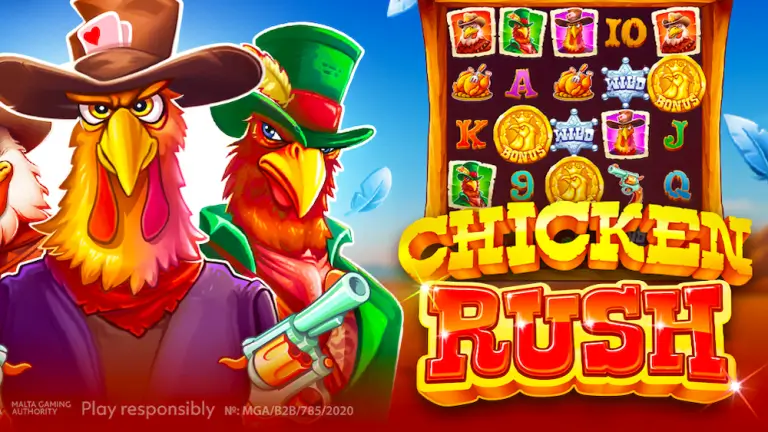After spending countless hours navigating the chaotic streets of Chicken Road, I can confidently say this isn’t just another mindless mobile game. What started as a simple concept – getting a chicken across busy roads – has evolved into something genuinely captivating that keeps pulling me back for “just one more round.” The developers have crafted an experience that’s deceptively simple on the surface but surprisingly deep when you start digging into the mechanics.
The beauty of Chicken Road lies in its accessibility. Anyone can pick it up and immediately understand the goal, but mastering the nuances takes genuine skill and patience. It’s this perfect balance that separates truly great games from forgettable time-wasters. What impressed me most during my extensive playtime was how the game manages to feel fresh even after hundreds of attempts, thanks to clever design choices that keep each run feeling unique.
Timing Your Moves. The Art of Perfect Traffic Navigation
Understanding traffic patterns is absolutely crucial if you want to move beyond amateur status in Chicken Road. Most new players make the mistake of rushing forward without observing the rhythm of oncoming vehicles. I learned this the hard way during my first few dozen attempts, watching my feathered friend get flattened repeatedly because I was too impatient to wait for the right moment.
The key insight here is that every lane has its own personality. Some roads feature steady, predictable traffic that moves at consistent intervals, while others throw curveballs with sudden speed changes or unexpected gaps. Smart players learn to read these patterns like a musician reading sheet music. You’ll notice that trucks tend to move slower but leave less room for error, while motorcycles zip by quickly but create longer safe windows afterward.
What really sets experienced players apart is their ability to plan multiple moves ahead. Instead of focusing solely on the immediate lane, they’re already calculating their next three or four steps. This forward-thinking approach prevents you from getting trapped in dangerous positions where you’re stuck between fast-moving traffic with nowhere to go. The developers deserve credit for creating traffic patterns that feel organic rather than artificially difficult.
Practice makes perfect, but smart practice makes champions. I recommend spending time in easier levels just watching traffic flow without moving your character. This observation period helps train your brain to recognize safe crossing opportunities automatically. Once these patterns become second nature, you’ll find yourself making split-second decisions with confidence rather than hesitation.
Character Selection Strategy. Which Chicken Gives You the Best Advantage
Character choice in Chicken Road isn’t just about aesthetics – different chickens actually offer subtle but meaningful gameplay advantages. The standard chicken works perfectly fine for beginners, but as you advance, these small differences become increasingly important for achieving high scores. I’ve tested every available character extensively, and the results might surprise casual players who haven’t paid attention to these details.
Speed variations between characters are more significant than they initially appear. The nimble chick moves noticeably faster than the plump rooster, which can mean the difference between making it across a busy intersection or becoming street pizza. However, faster isn’t always better. Some situations require patience and precise timing rather than quick reflexes, making slower characters surprisingly effective in certain scenarios.
Visual clarity plays a huge role that many players overlook completely. Brightly colored characters stand out better against busy backgrounds, making it easier to track your position during hectic moments. The developers showed excellent attention to detail by ensuring each character maintains good visibility across all the different environments you’ll encounter. This might seem like a minor point, but when you’re trying to navigate through multiple lanes of traffic while coins are scattered everywhere, clear visual feedback becomes essential.
My personal recommendation after extensive testing is to start with mid-speed characters that offer the best balance of agility and control. Once you’ve mastered the basics, experiment with extreme options like the lightning-fast chick or the methodical heavyweight rooster. Each character teaches different lessons about timing and positioning that will improve your overall gameplay regardless of which one you ultimately prefer for serious attempts.
Pattern Recognition. Reading Traffic Flow Like a Pro
Developing pattern recognition skills transforms Chicken Road from a game of chance into a game of skill. Traffic in this game isn’t random – it follows carefully designed patterns that become predictable once you know what to look for. The developers created a sophisticated system that feels chaotic to newcomers but reveals its logic to dedicated players willing to invest time in learning.
Every road section operates on invisible timers that control when vehicles appear and how fast they travel. Understanding these timers is like having a crystal ball that shows you exactly when safe crossing opportunities will present themselves. I spent weeks mapping these patterns, and the improvement in my scores was dramatic once everything clicked into place. What seemed impossible before suddenly became routine.
The breakthrough moment comes when you stop reacting and start predicting. Instead of waiting to see what traffic does, experienced players already know what’s coming based on what they’ve observed in previous lanes. This predictive ability allows for smooth, flowing movement that looks almost magical to observers who don’t understand the underlying mechanics.
Environmental cues provide additional information that most players completely ignore. The sound of approaching vehicles, changes in background music tempo, and even subtle visual indicators all telegraph what’s about to happen. The developers included these details to reward attentive players, and learning to utilize them gives you a significant competitive advantage. It’s this kind of thoughtful design that elevates Chicken Road above its simple premise.
Risk vs. Reward. When to Play Safe and When to Take Chances
Smart risk management separates good Chicken Road players from great ones. Every move involves a calculation: is the potential reward worth the danger you’re accepting? New players typically fall into one of two traps – they either play so conservatively that they miss opportunities, or they take reckless chances that end runs prematurely. Finding the sweet spot requires experience and good judgment.
High-value coins often appear in dangerous positions for a reason. The developers understand human psychology and deliberately place tempting rewards where they’ll encourage risky behavior. Experienced players learn to evaluate these situations objectively rather than emotionally. Sometimes that shiny coin simply isn’t worth the risk, especially when you’re already having a good run and building toward a personal best.
Situational awareness becomes crucial when making risk assessments. The same gap in traffic that’s perfectly safe during a calm moment becomes extremely dangerous when you’re already committed to a complex multi-lane crossing. Context matters enormously, and developing this judgment takes time and practice. I’ve seen too many promising runs end because players got greedy at exactly the wrong moment.
The most successful approach involves building a foundation of safe, consistent play and then adding calculated risks only when circumstances are favorable. This strategy produces higher average scores even if it occasionally means missing spectacular individual runs. The developers reward this kind of thoughtful play through their scoring system, which values consistency alongside pure distance traveled.
Power-Up Mastery. Maximizing Bonus Items for Maximum Score
Power-ups in Chicken Road can completely change the trajectory of your run when used strategically. Too many players grab these items without thinking about timing, wasting their potential impact. The developers created a variety of power-ups that each shine in different situations, and learning when to use each one dramatically improves your performance.
The invincibility power-up seems straightforward but requires surprisingly sophisticated timing to maximize its value. Novice players often activate it immediately upon collection, but experts save it for the most challenging sections where normal navigation would be nearly impossible. This patience allows you to clear multiple dangerous areas with a single power-up rather than wasting it on relatively safe terrain.
Speed boosts create interesting strategic dilemmas because they make precise timing more difficult while opening up crossing opportunities that wouldn’t otherwise exist. I’ve found that these work best in sections with wide, slow-moving traffic where the extra speed helps you reach safety zones before situations become dangerous. Using speed boosts in areas with narrow timing windows often backfires spectacularly.
The coin magnet power-up deserves special mention for how cleverly it changes your strategic priorities. Instead of carefully planning routes around coin locations, you can focus entirely on safe navigation while the magnet handles collection automatically. This shifts the entire risk-reward calculation and opens up conservative strategies that would be score-inefficient without the power-up active. The developers clearly put thought into how each power-up would interact with their core gameplay systems.
Advanced Techniques. Expert Movement Patterns and Positioning
Mastering advanced movement techniques requires understanding Chicken Road’s physics engine at a deeper level than most players ever reach. The game uses momentum and acceleration in subtle ways that create opportunities for skilled players while remaining invisible to casual users. These mechanics reward precision and planning in ways that become apparent only through dedicated practice.
The “rhythm method” involves synchronizing your movement with traffic patterns to create flowing, dance-like navigation through complex intersections. Instead of stopping and starting constantly, advanced players maintain steady forward progress by timing their steps to match vehicle spacing. This technique looks effortless when performed correctly but requires extensive practice to master.
Corner-cutting represents another advanced skill that can save precious milliseconds in tight situations. The game’s collision detection allows for precise positioning that lets you squeeze through gaps that appear impossibly narrow. However, this technique demands perfect timing and positioning – small errors result in immediate failure. I recommend practicing these maneuvers in low-pressure situations before attempting them during serious runs.
Positioning for future moves separates truly elite players from merely good ones. While average players focus on their immediate situation, experts are already planning their approach to obstacles three or four lanes ahead. This forward-thinking allows them to choose paths that set up optimal positioning for upcoming challenges rather than simply surviving the current moment. The developers reward this sophisticated play style through level design that favors strategic thinking over pure reflexes.
Final Thoughts
Chicken Road succeeds because it respects both casual players looking for quick entertainment and dedicated gamers seeking deep, skill-based challenges. The developers have created something genuinely special – a game that’s immediately accessible but rewards long-term investment with increasingly satisfying gameplay experiences. Every element, from character design to traffic patterns, shows careful consideration of how players will actually interact with the system.
What impresses me most is how the game maintains its charm even after hundreds of hours of play. The core loop remains engaging because mastery feels achievable but never complete. There’s always another technique to perfect, another strategy to explore, or another personal record to chase. This longevity speaks to the quality of the fundamental design and the developers’ understanding of what makes games truly compelling.
The customer support and community engagement deserve special recognition. The developers actively listen to player feedback and implement meaningful improvements without compromising the game’s essential character. This ongoing dialogue between creators and players creates a sense of shared investment that enhances the entire experience.
For anyone considering diving into Chicken Road, my advice is simple: start with realistic expectations but prepare to be surprised by the depth you’ll discover. This isn’t just another mindless mobile game – it’s a carefully crafted experience that rewards attention, patience, and skill development. The journey from novice to expert is genuinely rewarding, filled with “aha” moments that make all the practice worthwhile.
The gaming industry needs more titles like Chicken Road – games that prove simple concepts can support sophisticated gameplay without losing their essential accessibility. It’s a masterclass in game design that other developers would be wise to study and emulate.



